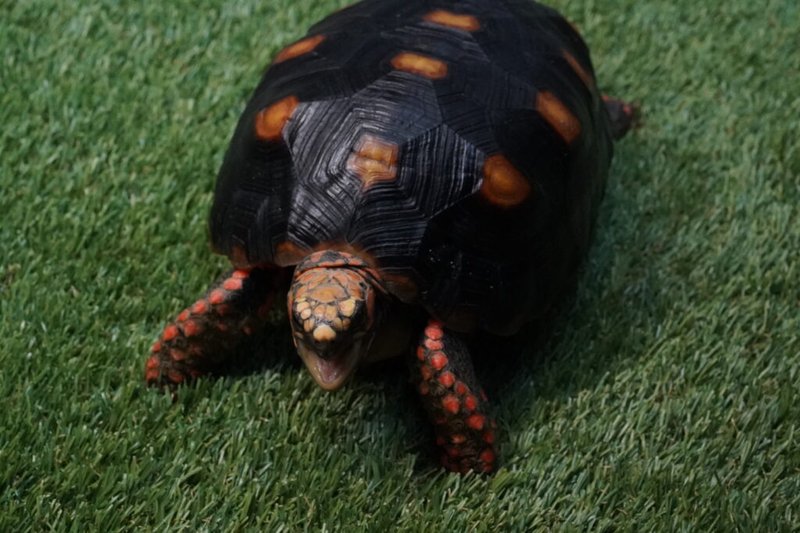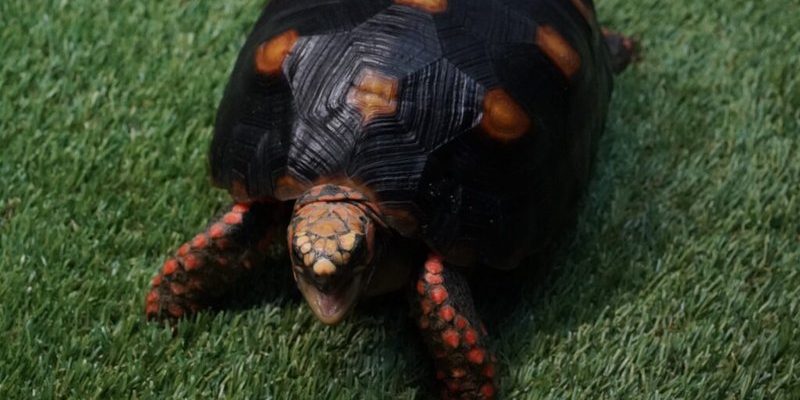
Think of your tortoise like a delicate watch—every gear needs to function perfectly for it to work well. If one part is off, the whole watch can falter. Similarly, if you overlook any aspect of your tortoise’s care—from diet to habitat—its health could take a serious hit. In this guide, we’ll explore common issues that can affect your red-footed tortoise and how to prevent them.
Understanding the Habitat Needs of Red-Footed Tortoises
Creating the right environment for your red-footed tortoise is crucial for its health. These tortoises are native to the warm, humid forests of South America, so mimicking these conditions at home is essential.
First, make sure their enclosure is spacious enough. A good rule of thumb is to give them at least a 4′ x 8′ area. Inside, use a mix of soil and coconut fiber to create a substrate that allows for burrowing—something these tortoises enjoy. Make sure it’s deep enough to hold moisture without becoming soggy.
You should also add hiding spots. Think of it as giving them a cozy den. Use logs, rocks, or even commercial tortoise hides. This way, your tortoise can retreat when it feels stressed, helping it to thrive emotionally and physically.
Nutrition: The Key to a Happy Tortoise
Diet is one of the most important aspects of keeping your red-footed tortoise healthy. They are herbivores, which means their meals should primarily consist of plant material. You might be wondering, “What exactly do I feed my tortoise?”
Start with leafy greens like collard greens, dandelion greens, and kale. But that’s not all! You can also offer safe fruits like papaya, mango, and strawberries as treats. Just remember, moderation is key—fruits should only make up a small part of their diet, as too much sugar can lead to health issues.
It’s also important to provide a calcium supplement. This helps prevent shell deformities and keeps their bones strong. Sprinkle a bit of calcium powder over their food a few times a week. Win-win!
Hydration: More Than Just A Water Bowl
Keeping your red-footed tortoise hydrated is crucial. You might think offering a water bowl is enough, but there’s more to consider.
Red-footed tortoises love soaking themselves. Regular baths in warm water not only keep them hydrated but also help with shedding their skin effectively. Aim for around 15-30 minutes in a shallow dish, ensuring the water is deep enough for them to soak comfortably without risking drowning.
In addition to baths, you should always provide clean water in their habitat. Change it daily to prevent bacteria buildup. Honestly, tortoises can sometimes be picky drinkers, so having a few different water sources can encourage them to drink more often.
Common Health Issues and How to Prevent Them
Just like any other pet, red-footed tortoises can face health issues. Understanding the common ones can help you catch problems before they escalate.
One of the most prevalent issues is respiratory infections, often caused by a cold or damp environment. Symptoms to watch for include nasal discharge, wheezing, or lethargy. To prevent this, maintain a warm and dry habitat. A basking light should keep a sunny spot in their enclosure around 85-90°F.
Another concern is shell deformities, which are often related to poor diet or lack of calcium. Make sure they’re getting a balanced diet rich in calcium and keep an eye on their shell for any signs of irregular growth.
The Importance of Regular Check-Ups
Just as we humans benefit from regular medical check-ups, so do our tortoises. Taking your red-footed tortoise to a veterinarian who specializes in reptiles is vital for their well-being.
These check-ups can help catch any underlying health issues before they become serious problems. During a check-up, the vet will assess your tortoise’s overall health, check its weight, and monitor its shell and skin condition.
You should plan for a vet visit at least once a year, but don’t hesitate to go sooner if you notice any signs of illness. Early detection can make all the difference!
Creating a Safe and Enriching Environment
Your red-footed tortoise isn’t just a pet; it’s a companion that thrives on companionship and stimulation. So, what can you do to keep its environment interesting and safe?
Consider adding live plants to its habitat. Not only do they provide additional food sources, but they also create a more natural environment. Just be sure to research any plants beforehand to avoid toxic species.
Another great idea is to rotate toys or even create obstacle courses. It sounds silly, but tortoises are curious creatures, and a little stimulation can go a long way. This helps prevent boredom and can keep them active—key elements for a healthy tortoise!
Caring for a red-footed tortoise is a rewarding journey, but it comes with its challenges. By understanding their habitat, nutritional needs, hydration, and common health issues, you’re on the right track to ensuring a long and healthy life for your shelled friend.
Remember, it’s all about creating an environment where they feel comfortable and secure. With a little effort and attention, your red-footed tortoise will not only thrive but also bring joy to your life. After all, there’s nothing quite like a happy tortoise slowly wandering around its enclosure, reminding you of the beauty of a simple life.

